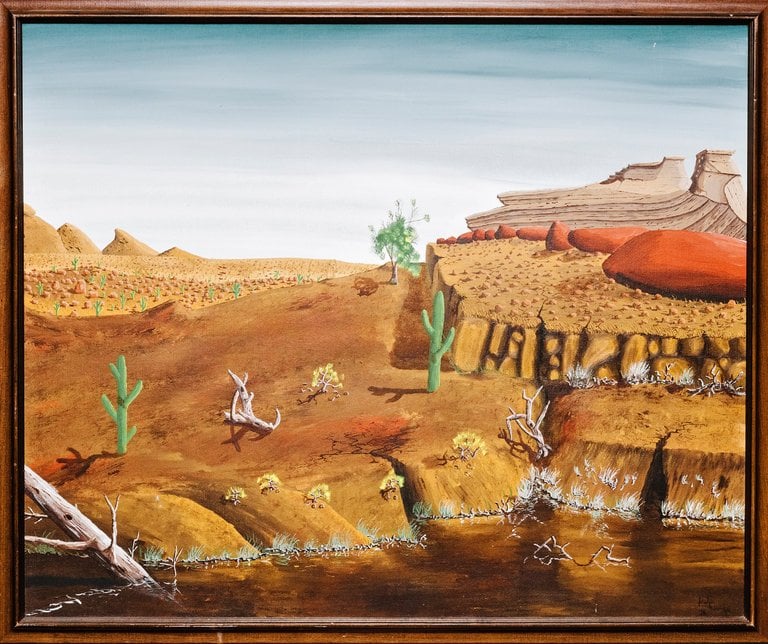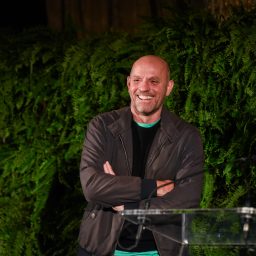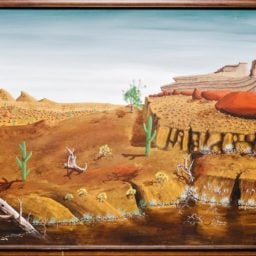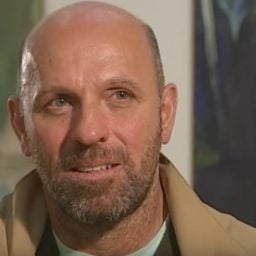In a satisfying denouement to one of the odder legal battles in recent years, Peter Doig has won a $2.5 million sanctions ruling in federal court against the Chicago gallery that sued him for disavowing a painting. After a tumultuous 2016 trial in which Doig himself was called to testify, a judge ruled that the artist “absolutely did not paint the disputed work.”
Judge Gary Feinerman has ordered Robert Fletcher (the owner of the painting), Chicago’s Bartlow Gallery Ltd., and their lawyer, William Zieske, to pay the defendants $2.5 million in sanctions.
The defendants had requested attorney fees in the amount of $2.8 million, as well as $610,398.90 in other expenses. Judge Feinerman reduced the fees from Dontzin Nagy and Fleissig LLP by 20 percent to account for “opaque bills,” and awarded 50 percent of the other expenses to arrive at the total number.
“Mr. Doig will donate any money he gets from this matter to a not-for-profit that provides incarcerated people opportunities to create art,” Matthew S. Dontzin, the artist’s lawyer, said in a statement.
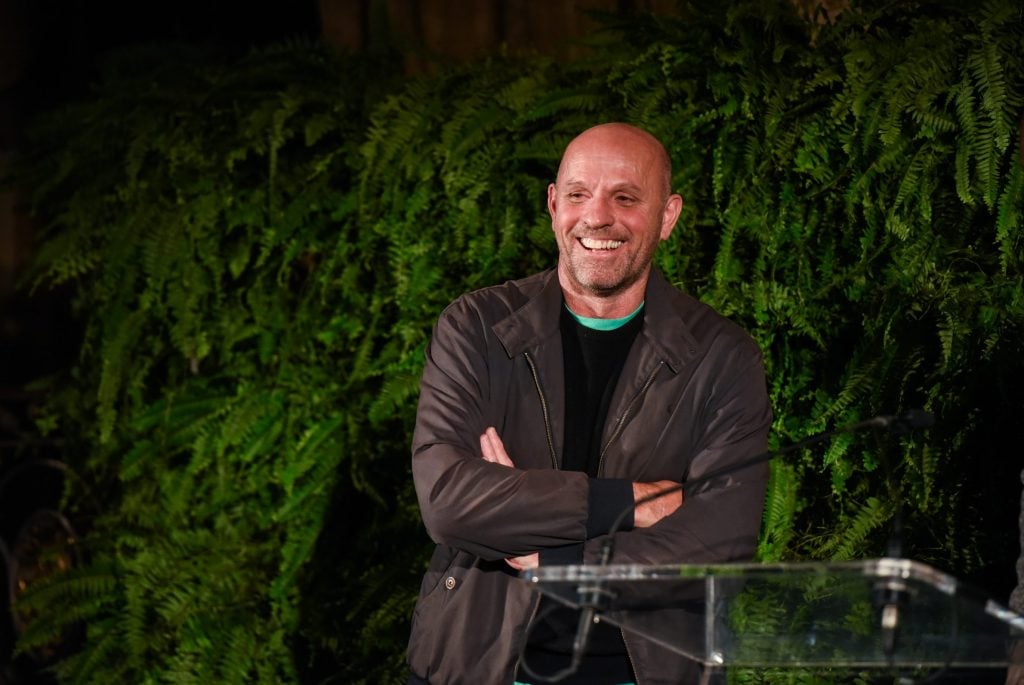
Peter Doig in 2018. Photo by Presley Ann, ©Patrick McMullan.
The actual artist behind the work in question, it turned out, was an inmate at Ontario’s Thunder Bay Correctional Center. Fletcher, who worked as a correctional officer at the facility during his studies at nearby Lakehead University, bought the painting from Peter Doige, with an “e,” a classmate-turned-inmate who created it in 1976 through the prison’s fine arts educational program after an LSD conviction.
Fletcher helped Doige gain membership to the Seafarers Union after he got out of prison, and purchased the painting for $100. It hung in Fletcher’s home until 2011, when a visiting friend spotted the “Peter Doige” signature, and identified it as a work of the famous Doig.
That’s when Bartlow Gallery got involved. That this could be the work of the famous Scottish artist seemed plausible. It was known that Doig had spent time living in Canada as a teen at the time when the painting was made, and it did seem reminiscent of his style.
Indeed, when gallery owner Peter Bartlow approached Sotheby’s with the painting, the auction house was intrigued, asking for more information about the “wonderful early painting by Peter Doig,” writing that “your work has the trademark eeriness of the empty landscape, and a stratified composition which recalls his later work.”
But when Bartlow reached out to Doig via the artist’s reps at New York’s Michael Werner Gallery, he hit a brick wall. The artist denied having made the painting, knowing Fletcher, or even having been in school in Thunder Bay.
The gallery sued Doig and Werner employee Gordon VeneKlasen, in April 2013, insistent that the artist had to be lying about the painting because he didn’t want the truth about his incarceration to get out. The lawsuit maintained that by refusing to authenticate the work, Doig was preventing the plaintiffs from selling it for what they claimed could be as much as $8 million.
Doig and his lawyers fired back with all sorts of documentation based on his full name, Peter Marryat Doig. Lakehead University didn’t have records of his enrollment, the Royal Canadian Mounted Police didn’t have records of his drug conviction, and paperwork from the artist’s high school showed he was still a student there at the time of the work’s creation.
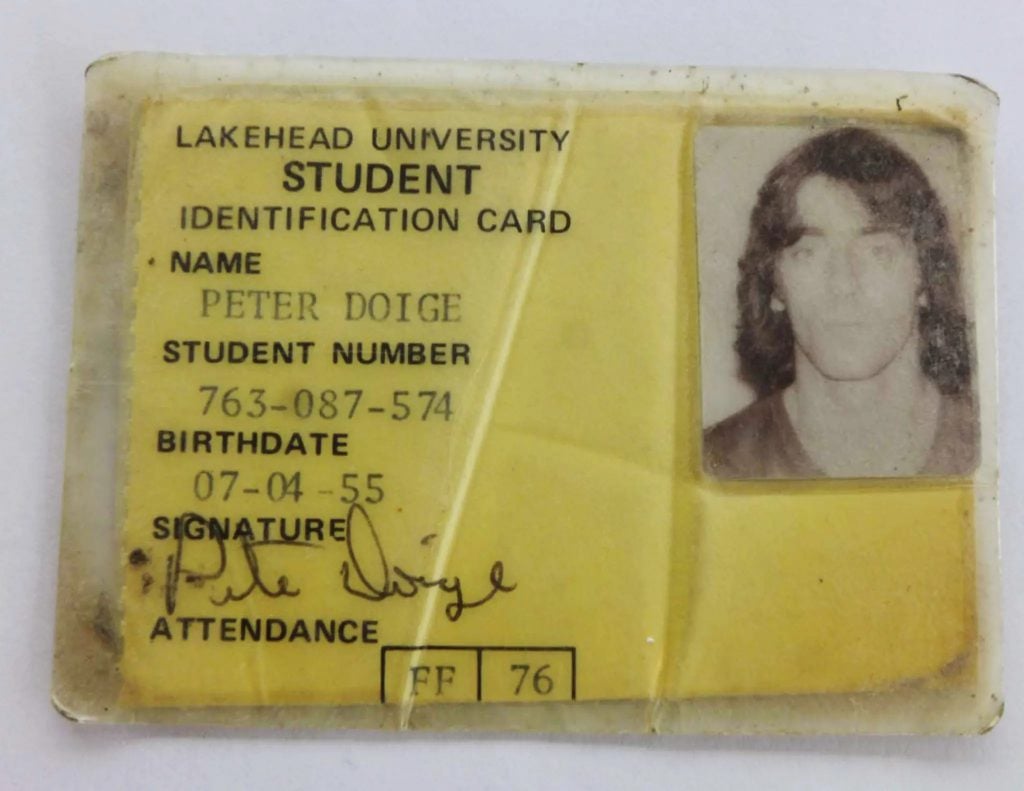
A Lakehead University for Peter Edward Doige, the deceased amateur painter whose painting became the subject of a legal battle over whether it was actually made by the more famous painter Peter Doig.
They even tracked down Marilyn Doige Bovard, who said that she was the sister of the deceased Peter Edward Doige. In September 2013, she confirmed that Doige had spent time behind bars at Thunder Bay, and provided a statement of his 2012 death from a funeral home. (Doige, it so happens, was born April 7, 1955, just over four years before Doig’s birth on April 17, 1959.)
That’s when the court asked Bartlow to consider dropping the case, warning Zieske, the lawyer on the case, that “if the… defendants turn out to be right, just because you had an objectively reasonable basis, assuming you did, at the beginning of the case, you can lose an objectively reasonable basis in the middle of the litigation. And it’s at least conceivable that this is that time.”
Instead, the case pressed on to trial. (The judge had the opportunity to dismiss the complaint, but did not, based on Fletcher’s insistence he had known the artist in prison.) Both Doige’s ex-wife and his Thunder Bay art teacher both further corroborated the existence of Peter Edward Doige, and the likelihood that he had painted the desert scene during his time in jail.
In the sanctions ruling, Judge Feinerman found that the plaintiffs had made a reasonable inquiry into the facts before taking legal action, but “should have begun to have substantial doubt about their claims” shortly after filing the case.
News of the ruling was first reported on January 2 by Instagram account @loyola_condenser, which closely followed the original trial. The account questions the ability of “the prison guard and elderly print dealer” to pay for whatever Zieske’s malpractice insurance carrier doesn’t cover, and claims that “Bartlow recently DM’d Doig via Instagram with a bizarre ‘settlement’ offer to keep Doig’s secret past,” suggesting he still believes the painting is by Doig, not Doige.
But after Bovard came forward—and once it became clear there were no other Doige family members to contradict her account—”to continue the litigation past that point was objectively unreasonable as the complaint’s central allegations had completely unraveled under the weight of contrary evidence,” Feinerman wrote.
The judge awarded sanctions for all legal action after May 7, 2014, after which point they “should have known that their claims were meritless and stood no chance of success.”
More Trending Stories:
Art Industry News: Online Critics Lambast Hank Willis Thomas’s ‘Insulting’ Martin Luther King Monument + Other Stories
A 2,000-Year-Old Burial Chamber, Uncovered by Siberian Gravediggers, Reveals Clues About a Little-Known Scythian Culture
A Monumental Munch Painting, Hidden From the Nazis in a Barn, Will Hit the Auction Block at Sotheby’s
‘It’s Not a Dying Art Form, Only a Changing One’: Marina Abramović on the Transformative Power of Opera
German Researchers Used Neutrons to Peek Inside an 800-Year-Old Amulet—and Discovered Tiny Bones
In an Ironic Twist, an Illustrator Was Banned From a Reddit Forum for Posting Art That Looked Too Much Like an A.I.-Generated Image
Here Are the Winning Photographs From Britain’s Biggest Portrait Competition, From Boxers to Beekeepers
